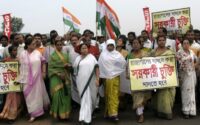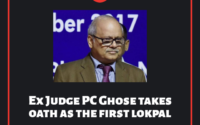INFRINGEMENT OF COPYRIGHT IN INDIA
Before understanding the infringement of copyright we have to understand the meaning and scope of the copyright act, what does exactly copyright means and how it affects, according to the section 13 of the copyright act it says that all in ‘original’ literary, dramatic, artistic, musical works as well as cinematographic films and sound recordings. The plaintiff in any copyright infringement suit must first establish that his work is original if it is literary, dramatic, artistic or musical in nature. However, originality is a subjective factor and has not been defined anywhere within the act and cannot be contested easily in the court of law. There are two major concepts which they look into to check the originality of the work are ‘sweat of the brow’ and ‘minimum modicum of creativity’. The different infringement in India is compared basically through the comparison of the texts, in a holistic approach. Therefore they compare the work unlike in U.S.A they go into the in depth analysis into the problem of the infringement. The important international conventions which deal with the infringement is universal copyright convention, the Geneva and Rome Convention, Universal copyright convention.
While finding out the infringement test the following things have to be tested, first we have to check that what kind of right is being targeted or infringed as mentioned under section 14 of the act it deals with the type of infringement, Generally speaking, this includes the right to reproduction, publication, translation and adaptation. In order to successfully prove a claim of infringement, the plaintiff has to establish that the defendant(s) has engaged in one of the acts that falls within the scope of exclusivity, now they test if the defendant has copied totally from the plaintiffs work then infringement of copyrights act has happened, when there is misappropriation, copying can therefore be proved by inference. The plaintiff has to prove basically that the defendant has totally copied the work and even the fact that the defendant cannot claim innocence through the fact that he did not know that the work had copyright, any particular form of resemblance would not mean that mean that the work has been infringed, there has to be a proper resemblance and the fact that the resemblance has to be complete and total. The plaintiff has to prove the fact with the evidences and in case evidences are absent he has to prove the substantial portion of the work has been copied and those part were of substantial importance. There are two types of infringement primary infringement and secondary infringement.
Primary infringement deals with the real act of copying, while secondary infringement deals with other kinds of dealing like selling the pirated books, importing etc.
Now after finding out if any important and substantial part has been under infringement there are the following remedies available which are civil, criminal and administrative, however it is the first two which is mostly put into use.
The civil remedies put the interlocutory injunctions, pecuniary remedies involves under Indian law, however, there is a departure made and the plaintiff, under sections 55 and 58, can seek recovery of all three remedies, namely (a) account of profits (b) compensatory damages and (c) conversion damages which are assessed on the basis of value of the article converted.
Criminal remedies for copyright violation include:
Punishment through imprisonment which, under Indian law, may not be less than six months but which may extend to three years, fines which, under Indian law, shall not be less than Rs.50.000. and which may extend to Rs.200, 000.
Search and seizure of the infringing goods including plates which are defined as including blocks, moulds, transfers, negatives, duplicating equipment or any other device used or intended to be used for printing or reproducing copies of the work.
Returning of infringing copies or plates to the owner of the copyright.
These days with the rise of patents and copyrights the violation of these rights are also on the rise. So the remedies available need to be applied properly so that people deter from doing such activities.
By:
Ankita Bakshi


